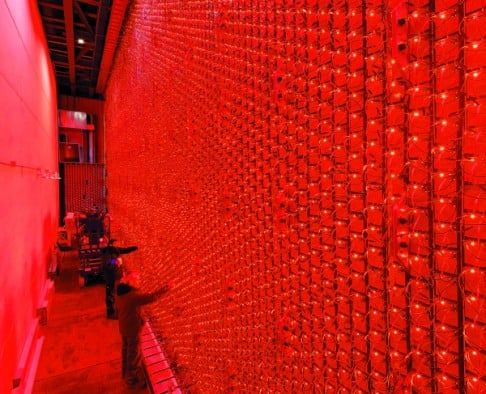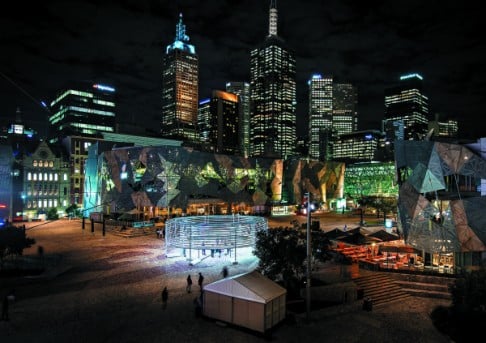Asif Khan is gaining recognition for the originality of his designs

Architect Asif Khan's creative mind is mainly inspired by art, science and nature
There is no pigeonholing Asif Khan. The London-born architect and designer is only 35 years old, yet his eponymous studio has compiled an incredibly varied body of work that has seen him work with sound, digital technologies and - most recently - light, as seen in Radiant Lines, an installation that was part of Melbourne's The Light in Winter festival held in June.
It was Khan's first Australian project, which resulted in him creating a series of concentric rings in raw aluminium that were suspended above the ground. At dusk, these rings came alive with light, performing a luminous dance as people moved across thresholds dotted around Melbourne's Fed Square.
Art and "the experience of line quality" inspired Radiant Lines. Perhaps the only typical element of Khan's design is the fact that it takes a lateral approach, inspired by numerous things outside the standard architectural discipline.
"I find myself inspired by art, science and nature, but as much as that, by the writings of Haruki Murakami," Khan says. "He creates precisely controlled visual and temporal worlds using only words. It's breathtaking. We're trying to do that with bricks and mortar."
Japanese writer Murakami is known for the force of his imagination, and the same can be said of Khan, who has been heralded for the strength of his inventiveness. This, perhaps, is what led companies like Coca-Cola and the Russian telecom brand MegaFon to seek out his services in building jaw-dropping installations.

The Coca-Cola project put Khan on the map. Presented at the 2012 Olympic Games in London, the beverage powerhouse's Beat Box Pavilion consisted of an interactive installation created in collaboration with architect Pernilla Ohrstedt. Visitors could create their own mix of Olympic sounds by gesturing and moving in certain ways while going up the pavilion's ramp. Music producer Mark Ronson created the sounds, which included recordings of athletes' heartbeats and squeaking shoes.
Khan also took a digital approach at the Olympics in Sochi last winter. His pavilion for MegaFon was dubbed a "Mount Rushmore of the Digital Age": visitors to the 2,000-square-metre cube could step inside a booth that scanned their facial impressions and translated them into three-dimensional portraits that appeared on an exterior wall, magnified to 3,500 times their normal size.
"My studio is exploring ways in which architecture can become more relevant to how we live our lives today, and the integration of technology is one aspect of that," Khan says of working on the MegaFon and Coca-Cola installations. "It's crazy to think that we carry more technology in our pockets today than was used to send the Apollo spacecraft to the moon in the 1960s. We're trying to harness that momentum for architecture. Digital technology is very good at allowing people to share experiences, and it seems it could be a natural partner for architecture." Khan started working on installations in 2009, beginning with a mirrored, stainless steel mobile, Swivel, that he designed for British fashion designer Osman Yousefzada's runway show. Prior to this, Khan's studio - which he set up in 2007 - had been focusing on products, furniture and permanent architectural structures, and these are still a significant part of the workload.
